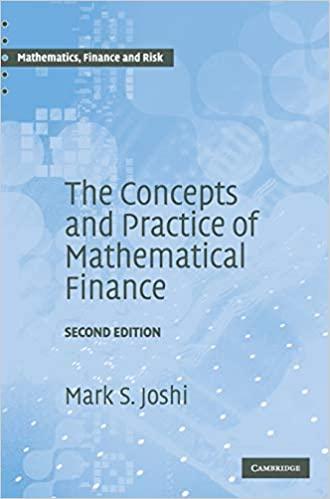


The risk-free interest rate $r_f$ is zero and the mutual funds (passive and active, respectively) claim to deliver the following total returns (before fees): RPF = RM = 6% + u RAF = 1.5% +1.2 x RM + Et where RM is the return of market index, the error terms Uy and are independent over time and of each other, have zero means E[44] = E[4] = 0, and volatilities of o(Ut) = 15% and o() = 4%. The hedge fund uses the same strategy as the active mutual fund, but implements the strategy a long-short hedge fund, applying 3 times leverage, generating the following return before fees: RAF = 3 x (RAF RM) Answer to the following questions. Round your answers to two decimals. a) What is the active mutual fund's beta (with respect to the stock index)? BAF = 1.2 b) What is the hedge fund's beta? BHF= 0 c) What is the hedge fund's volatility? 12 X (in %) d) What is the hedge fund's R-squared relative to the market index? R-squared= 92.89 X (in %) e) What is the hedge fund's alpha before fees? QHF = 4.5 (in %) f) What is the hedge fund's expected return before fees? E[RF]= 4.536 X (in %) g) Suppose that the passive fund has a fee of 0.30% and the active fund has a fee of 1.40%. An investor has $30 invested in the active fund and $70 in cash. She/he changes her/his investment to an equivalent investment in the hedge fund, the passive mutual fund, and cash, i.e., with the same alpha and the same exposures to RM stock index and 7. Which management fee for the hedge fund makes the two investments identical in terms of net returns (assume that the hedge fund charges a zero performance fee)? feeHF = X (in %) The risk-free interest rate $r_f$ is zero and the mutual funds (passive and active, respectively) claim to deliver the following total returns (before fees): RPF = RM = 6% + u RAF = 1.5% +1.2 x RM + Et where RM is the return of market index, the error terms Uy and are independent over time and of each other, have zero means E[44] = E[4] = 0, and volatilities of o(Ut) = 15% and o() = 4%. The hedge fund uses the same strategy as the active mutual fund, but implements the strategy a long-short hedge fund, applying 3 times leverage, generating the following return before fees: RAF = 3 x (RAF RM) Answer to the following questions. Round your answers to two decimals. a) What is the active mutual fund's beta (with respect to the stock index)? BAF = 1.2 b) What is the hedge fund's beta? BHF= 0 c) What is the hedge fund's volatility? 12 X (in %) d) What is the hedge fund's R-squared relative to the market index? R-squared= 92.89 X (in %) e) What is the hedge fund's alpha before fees? QHF = 4.5 (in %) f) What is the hedge fund's expected return before fees? E[RF]= 4.536 X (in %) g) Suppose that the passive fund has a fee of 0.30% and the active fund has a fee of 1.40%. An investor has $30 invested in the active fund and $70 in cash. She/he changes her/his investment to an equivalent investment in the hedge fund, the passive mutual fund, and cash, i.e., with the same alpha and the same exposures to RM stock index and 7. Which management fee for the hedge fund makes the two investments identical in terms of net returns (assume that the hedge fund charges a zero performance fee)? feeHF = X (in %)









